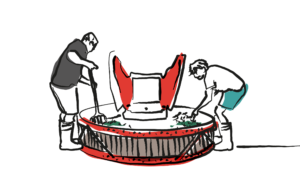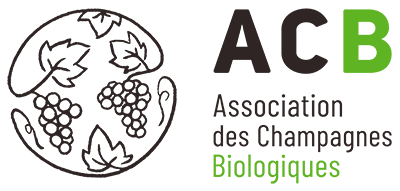ORGANIC WINEMAKING
European organic winemaking regulation N° 203/2012 was activated on August 1st 2012 and is based on four points:
- Organic ingredients
All the ingredients used for the compostion of the wine must be certified organic: The grapes, of course, but also the sugar or concentrated grape juice used as its replacement.
- Additives and processing components
The list of additives and processing aids is explicit. When available, only the organic elements that are included on this list are authorized.
This list is annexed to regulation N°203/2012
- Sulfur Dioxide
The amount of sulfur dioxide depends not only on the type of wine but also its sugar content. For Champagne wines it is limited to 150mg/liter.
- Oenological practices
The list of oenology methods is restrictive, it mentions the prohibited practices for organic wine making.
For the production of Champagne, a second fermentation must be done in bottle to create the excitement. Sugar and yeasts are necessarily incorporated during bottling.
Another use of sugar will define the dosage during disgorging (extraction of the deposit generated by fermentation in the bottle).
Depending on the origin and the quantity of total ingredients used, an EU / non-EU Agriculture designation may appear alongside the European organic label (for example when using cane sugar from tropical countries).
European organic winemaking regulation N° 203/2012 was activated on August 1st 2012 and is based on four points:
- Organic ingredients
All the ingredients used for the compostion of the wine must be certified organic: The grapes, of course, but also the sugar or concentrated grape juice used as its replacement.
- Additives and processing components
The list of additives and processing aids is explicit. When available, only the organic elements that are included on this list are authorized.
This list is annexed to regulation N°203/2012
- Sulfur Dioxide
The amount of sulfur dioxide depends not only on the type of wine but also its sugar content. For Champagne wines it is limited to 150mg/liter.
- Oenological practices
The list of oenology methods is restrictive, it mentions the prohibited practices for organic wine making.
For the production of Champagne, a second fermentation must be done in bottle to create the excitement. Sugar and yeasts are necessarily incorporated during bottling.
Another use of sugar will define the dosage during disgorging (extraction of the deposit generated by fermentation in the bottle).
Depending on the origin and the quantity of total ingredients used, an EU / non-EU Agriculture designation may appear alongside the European organic label (for example when using cane sugar from tropical countries).


